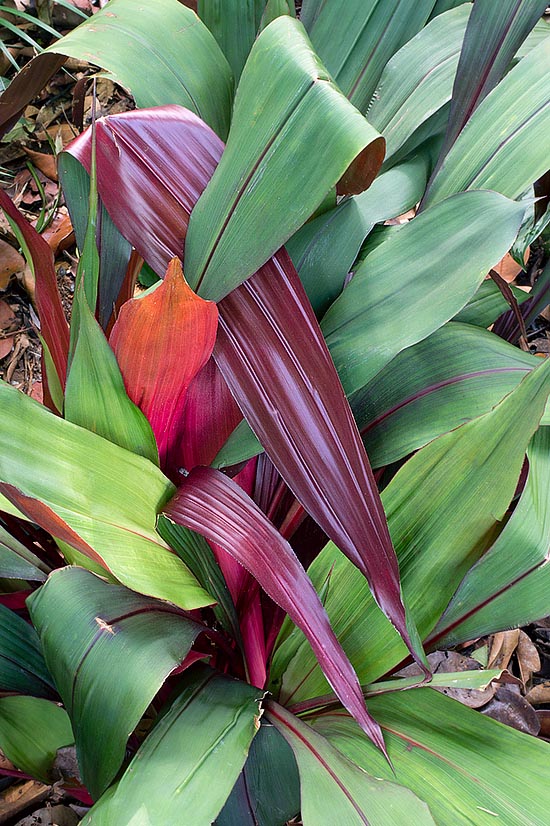Family : Bromeliaceae

Text © Pietro Puccio

English translation by Mario Beltramini

Unusual Colombian bromeliad, Pitcarnia sanguinea is a perennial terrestrial herbaceous species, evergreen, monocarpic, of great landscape and ornamental value also in pot © Giuseppe Mazza
The genus is honoured to the English physician Williams Pitcairn (1711-1791), lover of botany and collector of exotic plants in whose greenhouses was described the species type; the specific name is the Latin adjective “sanguineus, a, um” = sanguine, blood coloured, with reference to the colour of the lower page of the leaves.
Common names: blood leaf bromeliad (English).
The Pitcairnia sanguinea (H.E.Luther) D.C.Taylor & H.Rob. (1999) is a perennial terrestrial herbaceous species, evergreen, monocarpic (it flowers only once then dies), provided of 4-7 leaves, on an up to about 42 cm long petiole, of dark green colour with central rib purple above, purple red below, 40-60 cm long and 5-7 cm broad, lanceolate with long pointed apex, curved. The red inflorescence, at the centre of the rosette, is formed by one floral scape, about 35 cm long, ending in a raceme, up to about 18 cm long, formed by lanceolate bracts subtending the tubolar hermaphroditic flowers with 3 free lanceolate sepals with pointed apex, 2 cm long and 3 free oblong petals with pointed apex, 5-6 cm long. The fruit is a capsule containing numerous small seeds.
It reproduces by seed, to be planted as soon as possible, in organic loam with addition of siliceous sand per a 30% maintained humid at the temperature of 24-28 °C, and by division through the new vegetations coming out at the base of the mother plant.
Species of great ornamental and landscape value suitable for the tropical and humid subtropical zones, as it does not bear temperatures close to 0 °C, if not exceptional and very short lasting, to be utilized in mass as ground cover of for borders.
Requires a very luminous exposition, also full sun in the morning hours, and particularly draining and aerated soils rich of organic substance, slightly acidic to slightly alkaline, maintained constantly humid, but without stagnations that might cause rottenness. The fertilizations, in spring summer, are to be done with balanced products with microelements under form of chelates. Excellent subject to cultivate in pot for the decoration of particularly luminous ambients, with lowest winter temperatures not under the 16 °C and regular waterings during the vegetative period, more spaced in winter, but without ever allowing the substratum to dry up completely. In presence of dry air and high temperatures the ambient humidity may be increased with frequent nebulizations using water at ambient temperature, non calcareous in order to avoid unaesthetic spots on the leaves. In order to create a more humid microenvironment around the plant we can also place the pot on a saucer of greater diameter containing expanded clay, crushed stones or other inert material, partially filled up of water at a level such as not to touch the bottom of the pot.
Synonyms: Pepinia sanguinea H.E.Luther (1997).
→ For general notions about BROMELIACEAE please click here.
